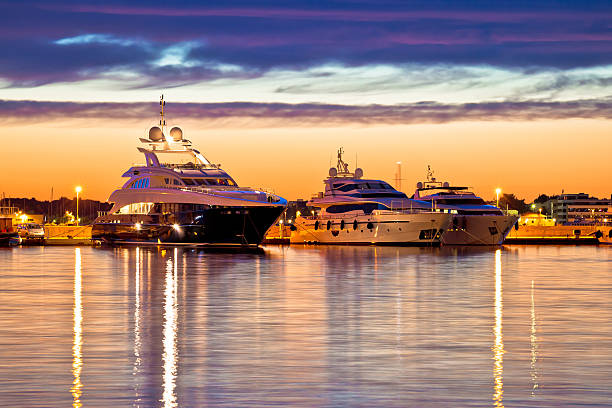The Pyramid of Luxury Brands: Understanding the Hierarchy
Introduction to Luxury Brand Hierarchies
Luxury brands have long fascinated consumers and industry professionals alike, representing not just high-quality products but also a lifestyle of opulence and exclusivity. The pyramid of luxury brands is a conceptual framework used to categorize these brands based on their market positioning, exclusivity, and prestige. Understanding this hierarchy can offer valuable insights into consumer behavior, brand strategy, and market dynamics.
The Foundation of the Pyramid: Accessible Luxury
At the base of the pyramid lie accessible luxury brands. These brands offer a taste of luxury to a broader audience, making high-end fashion and products more attainable. Accessible luxury brands, such as Michael Kors and Coach, maintain a balance between exclusivity and mass appeal. They often feature premium materials and craftsmanship, but at price points that are within reach for a larger segment of consumers. This level of the pyramid plays a crucial role in introducing consumers to the world of luxury, often serving as the entry point for future high-end purchases.
Mid-Level Luxury: Aspiration and Attainability
Moving up the pyramid, we encounter the mid-level luxury brands. These brands occupy a space of aspiration and attainability, offering products that are more exclusive and higher in quality than accessible luxury brands. Brands like Prada, Gucci, and Burberry fall into this category. They are characterized by a combination of exceptional craftsmanship, innovative design, and a strong brand heritage. Mid-level luxury brands are often seen as a step up in the luxury journey, appealing to consumers who have developed a taste for luxury and are willing to invest more in their fashion and lifestyle choices.
High-End Luxury: Exclusivity and Prestige
The next tier in the pyramid is high-end luxury, which includes brands that epitomize exclusivity and prestige. Brands such as Chanel, Louis Vuitton, and Hermès are prime examples of high-end luxury. These brands are synonymous with superior quality, exquisite craftsmanship, and timeless design. High-end luxury products often come with a hefty price tag, reflecting the meticulous attention to detail and the use of the finest materials. Ownership of these brands is a statement of success and sophistication, reserved for those who can afford the finest things in life.
Ultra-Luxury: The Pinnacle of Opulence
At the very top of the pyramid are the ultra-luxury brands. These brands represent the pinnacle of opulence and are often limited to an elite clientele. Ultra-luxury brands like Rolls-Royce, Patek Philippe, and Richard Mille are known for their extreme exclusivity, with products that are often custom-made or produced in very limited quantities. The level of personalization and bespoke service offered by ultra-luxury brands is unmatched, catering to the unique preferences and desires of each individual customer. These brands not only sell products but also offer an unparalleled experience of luxury.
The Dynamics of the Luxury Brand Pyramid
The pyramid of luxury brands is not static; it evolves with changing consumer preferences, economic conditions, and cultural shifts. Brands at different levels of the pyramid continuously strive to innovate and differentiate themselves, maintaining their unique positioning while responding to market demands. The interplay between the different tiers of the pyramid creates a dynamic ecosystem where each level supports and enhances the overall perception of luxury.
Marketing Strategies Across the Pyramid
Marketing strategies vary significantly across the different levels of the luxury brand pyramid. Accessible luxury brands often focus on brand collaborations, celebrity endorsements, and social media campaigns to reach a wider audience. They leverage the power of digital marketing to create buzz and drive engagement.
Mid-level luxury brands, on the other hand, emphasize their heritage, craftsmanship, and exclusivity. Their marketing strategies often include high-profile fashion shows, limited edition releases, and collaborations with renowned designers. They aim to create a sense of aspiration and desirability among consumers.
High-end luxury brands rely heavily on maintaining an aura of exclusivity. Their marketing efforts are more subdued and often centered around private events, exclusive showings, and personalized customer experiences. They invest in creating a strong brand narrative that emphasizes their history, craftsmanship, and timeless appeal.
Ultra-luxury brands take exclusivity to the next level, often shunning traditional marketing channels altogether. Their marketing is highly personalized, focusing on one-on-one relationships with clients, private previews, and bespoke services. The emphasis is on creating a unique and unforgettable experience that reflects the brand's commitment to the highest standards of luxury.
The Role of Digital Transformation
In recent years, digital transformation has had a profound impact on the luxury brand pyramid. Brands across all levels have embraced digital technologies to enhance their customer experience, streamline operations, and reach new audiences. E-commerce, social media, and digital marketing have become integral to the luxury industry, allowing brands to connect with consumers in innovative ways.
For accessible and mid-level luxury brands, digital channels offer a way to engage with a broader audience and drive sales. High-end and ultra-luxury brands, while more cautious in their digital approach, have also recognized the importance of online presence and digital engagement. Virtual showrooms, augmented reality experiences, and personalized online services are some of the ways these brands are integrating digital into their luxury offerings.
Challenges and Opportunities in the Luxury Brand Pyramid
The luxury brand pyramid faces several challenges and opportunities in today's market. One of the main challenges is maintaining exclusivity and prestige in an increasingly digital and globalized world. As luxury brands expand their reach through digital channels, they must carefully balance accessibility with exclusivity to preserve their brand value.
Sustainability is another critical issue for luxury brands. Consumers are increasingly demanding ethical and sustainable practices from the brands they support. Luxury brands are responding by incorporating sustainable materials, transparent supply chains, and ethical practices into their operations. This shift towards sustainability not only meets consumer expectations but also enhances the brand's image and long-term viability.
The rise of new wealth, particularly in emerging markets, presents a significant opportunity for luxury brands. As more consumers in these markets attain higher disposable incomes, the demand for luxury goods is expected to grow. Brands that can effectively tap into these markets while maintaining their exclusivity and prestige stand to gain significantly.
The Future of the Luxury Brand Pyramid
Looking ahead, the future of the luxury brand pyramid will be shaped by several key trends. Personalization will continue to be a major focus, with brands offering increasingly tailored experiences and products to meet individual customer preferences. Technology will play a crucial role in enabling this personalization, from AI-driven recommendations to virtual try-ons and bespoke services.
The concept of luxury is also evolving, with consumers placing greater emphasis on experiences over possessions. Luxury brands are expanding their offerings to include unique and memorable experiences, from exclusive travel packages to curated events and personalized services. This shift towards experiential luxury reflects the changing values and preferences of modern consumers.
Moreover, the integration of sustainability into the core of luxury brands will be essential. As consumers become more conscious of their environmental and social impact, brands that prioritize sustainability will gain a competitive edge. This includes not only sustainable products but also sustainable business practices and a commitment to social responsibility.
Conclusion
The pyramid of luxury brands provides a valuable framework for understanding the different levels of luxury and their unique characteristics. From accessible luxury to ultra-luxury, each level of the pyramid offers distinct products, experiences, and marketing strategies. As the luxury market continues to evolve, brands must navigate the challenges and opportunities presented by digital transformation, sustainability, and changing consumer preferences. By staying true to their core values and continuously innovating, luxury brands can maintain their prestige and allure in an ever-changing landscape.
.jpg)



